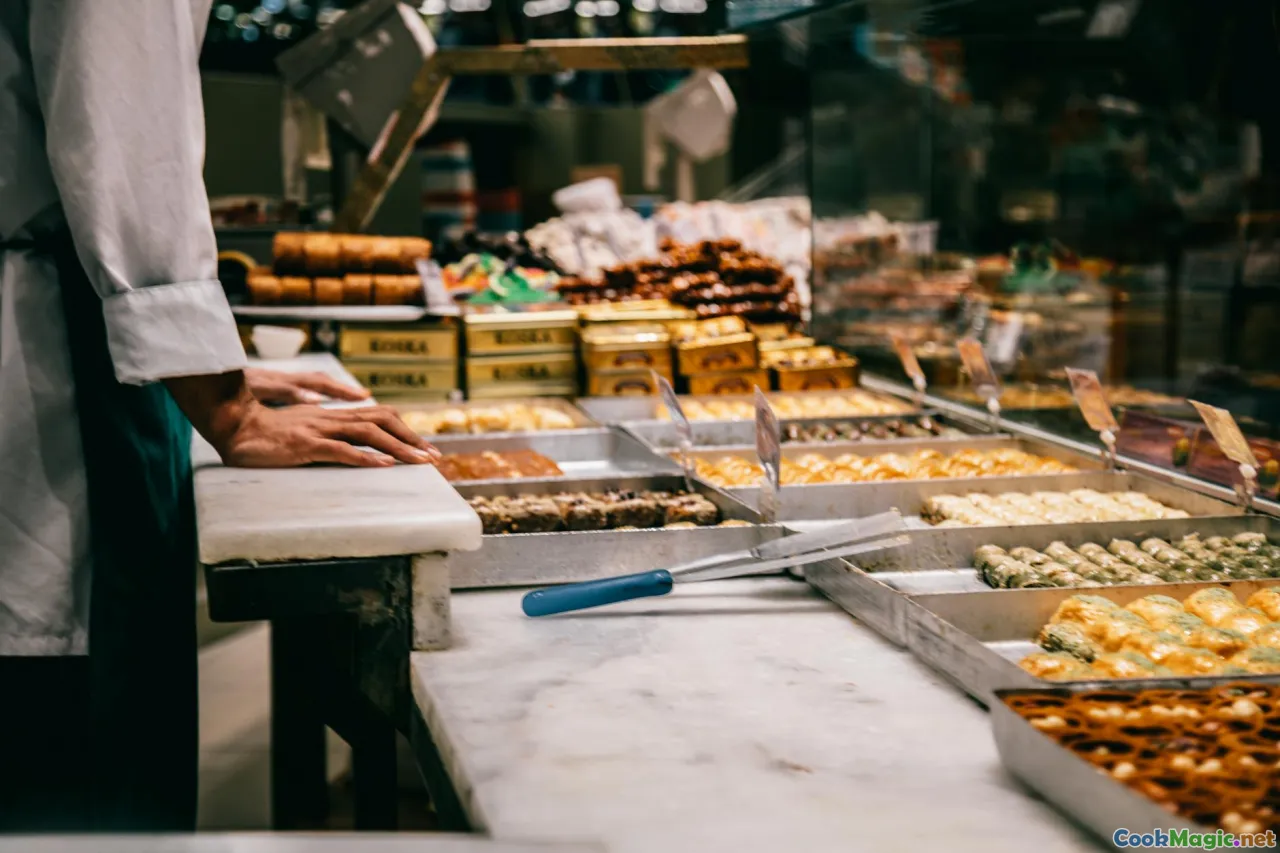Exploring the Flavors of Albanian Pastry
8 min read Discover the rich history, vibrant flavors, and cultural significance of Albanian pastries, a delightful journey through their beloved baked treasures. April 20, 2025 03:00
Exploring the Flavors of Albanian Pastry
Introduction: A Journey into Albanian Baking
Imagine walking through the ancient streets of Tirana or the quaint villages nestled in the Albanian Alps. The air is thick with the aroma of freshly baked goods, a comforting scent that beckons you to explore deeper into the country’s culinary soul. Albanian pastries are more than just food — they are stories, traditions, and celebrations wrapped in golden layers of dough and filled with a variety of sweet and savory ingredients.
What makes Albanian pastries truly enchanting is their deep-rooted history and the cultural tapestry they represent. From the bustling markets of Shkodra to the serene coastal towns, these baked delights are a testament to centuries of culinary evolution influenced by Ottoman, Balkan, Mediterranean, and local Albanian traditions. Join me as I explore the diverse world of Albanian pastries, uncovering their secrets, flavors, and the stories they whisper.
The Cultural Significance of Albanian Pastries
Albanian pastries are not merely everyday snacks; they are integral to social gatherings, religious festivals, and family celebrations. Each region boasts its own specialties, shaped by local ingredients, climate, and cultural influences.
In rural areas, baking is often a communal activity, a time for neighbors to gather and share stories while kneading dough and preparing fillings. These pastries symbolize hospitality and generosity — offering a piece of one’s tradition to visitors or loved ones.
Historically, during Ottoman rule, pastry-making techniques and ingredients like phyllo dough, nuts, and honey entered Albanian kitchens, blending seamlessly with indigenous recipes. Today, these pastries serve as edible ambassadors of Albanian identity, bridging past and present.
A Closer Look at Iconic Albanian Pastries
1. Byrek — The Savory Delight
One of the most beloved Albanian pastries isbyrek, a flaky, layered pie filled with an array of ingredients. Its origins trace back to Ottoman times, sharing similarities with Turkish börek. In Albania, byrek comes in many regional variations.Characteristics:-Dough: Thin, crispy phyllo layers brushed with butter or oil.
- Fillings: Spinach and feta, minced meat spiced with herbs, or even pumpkin and cheese.
- **Texture and Flavor:**The first bite offers a crispy crunch, giving way to a savory, gooey interior. The aroma of baked herbs and melted cheese is irresistible.Personal Reflection: I remember the first time I tasted a warm slice of byrek in a small mountain village, the flavors bursting with freshness and earthiness. It’s a dish that embodies Albanian hospitality.
2. Tullumba — The Sweet Feast
Tullumba (ortulumba) is a sweet, fried pastry soaked in honey syrup, often served during celebrations or religious holidays.Characteristics:-Dough: A soft, doughy mixture piped into hot oil.
- Shape: Usually twisted or spiral-shaped.
- **Flavor and Texture:**Crispy on the outside, tender inside, with a rich honey aroma enveloping each piece.Cultural Note: In Albanian tradition, tullumba is a symbol of joy and abundance, often shared among family and friends during festive occasions.
3. Flia — The Layered Tradition
Flia is a type of layered pancake, traditionally prepared during special family gatherings.Characteristics:-Preparation: Thin layers of batter are cooked separately and then stacked.
- Serving: Often accompanied by honey, jam, or fresh cream.
- **Experience:**The soft, delicate layers melt in your mouth, offering a subtle sweetness complemented by rich toppings.Personal Insight: Making flia is an art passed down through generations, each family adding their unique touch.
Ingredients and Techniques: Crafting Albanian Pastries
Essential Ingredients
- Phyllo dough: Either homemade or store-bought, it’s the backbone of many pastries.
- Nuts: Walnuts, almonds, and pistachios are commonly used in sweet fillings.
- Cheese: Feta and ricotta lend savory richness.
- Honey and Syrup: Natural sweeteners that add depth.
- Herbs and Spices: Dill, mint, and cinnamon elevate flavor profiles.
Techniques and Tips
- Dough Handling: Mastering thin, even layers of phyllo is crucial for the perfect flaky texture.
- Filling Balance: Not too moist, to prevent sogginess.
- Baking: Usually at moderate temperatures to ensure crispness without burning.
- Syrup Soaking: Pour honey syrup over pastries while still warm for optimal absorption.
Personal Tips
In my experience, the secret to authentic Albanian pastries lies in patience and respecting traditional methods. Using high-quality ingredients and taking the time to layer and bake properly yields the most memorable results.
Regional Variations and Modern Twists
While traditional recipes hold a special place, contemporary chefs are experimenting with Albanian pastry classics. Some incorporate local seasonal fruits, organic ingredients, or fusion techniques to create innovative flavors.
For example, a modern twist on byrek might feature a gluten-free almond crust or a vegan filling. These adaptations make Albanian pastries accessible to diverse palates while honoring their roots.
Personal Reflection and Cultural Connection
Having traveled across Albania and shared countless pastry-filled tables, I’ve learned that these baked goods are more than just sustenance—they are expressions of love, community, and identity. Each bite transports you to a place where history and hospitality intertwine.
Whether enjoyed as a quick snack on the street or savored during festive gatherings, Albanian pastries invite you into a world of rich flavors and warm traditions. They remind us that food is indeed a universal language, speaking across generations and borders.
Conclusion: An Invitation to Explore
The next time you encounter an Albanian pastry, take a moment to appreciate its story. From the flaky layers of byrek to the sweet crunch of tullumba, each bite offers a taste of Albanian history and heart.
So, why not try baking your own Albanian pastry at home? With patience, love, and a dash of curiosity, you can bring a piece of Albania’s vibrant culinary heritage into your own kitchen. As you do, you’ll discover that these pastries aren’t just food—they are a celebration of life, culture, and connection.
Embark on this flavorful adventure, and let Albanian pastries charm your palate and warm your soul.









